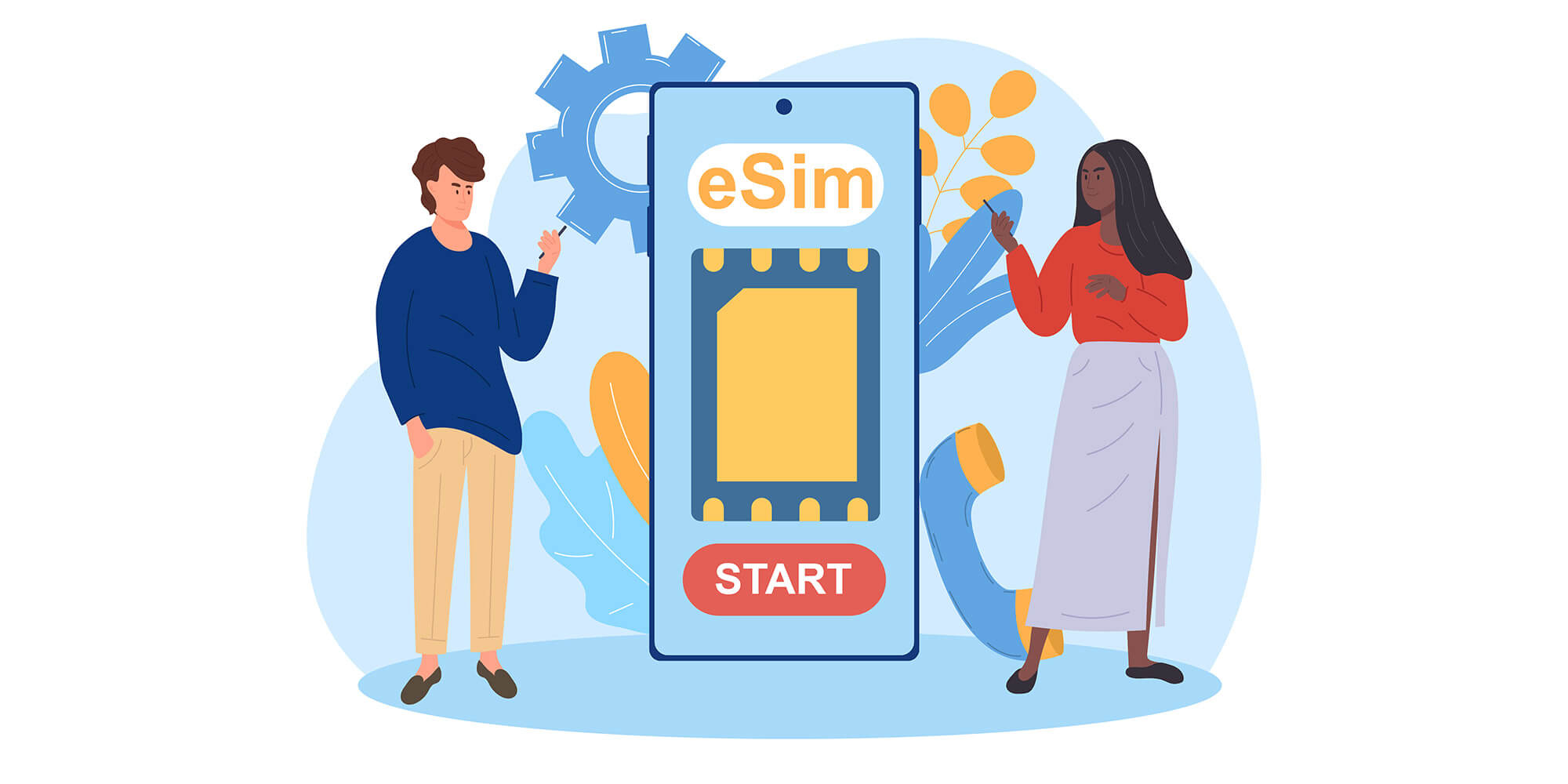How an eSIM makes life easier - DEEP

An eSIM makes it much easier to juggle multiple numbers on a single device. Among other advantages, having a mobile with a built-in electronic SIM card offers you greater freedom when travelling abroad.
In many people's minds, a mobile subscription is associated with a small piece of plastic with a built-in microchip: the SIM card.
This electronic chip has changed considerably over the years. It has become progressively smaller, with the emergence of the mini-SIM, the micro-SIM and then the nano-SIM. And yet, a physical SIM of some kind has always been essential for your mobile device to work properly.
What is an eSIM?
With an eSIM, short for “embedded SIM”, this little chip will disappear – at least in the eyes of the user.
An eSIM is a microchip that is built directly into the smartphone during the manufacturing process. It is therefore no longer necessary to install it afterwards to connect to a telephone network or to remove it when you want to change operator.
How does an eSIM work?
Like a SIM card, an eSIM is essential for connecting a smartphone or tablet to a mobile network. This chip contains a set of encrypted data that allows the connection to be established and secured. For a long time, each operator guaranteed service provision to each customer by having its own SIM cards manufactured.
This is no longer necessary. With an eSIM, the chip is embedded in the phone and cannot be removed. It allows you to access the same services as a SIM and meets the same needs. It's how you make calls, send text messages and connect to the internet.
The main difference is that it no longer has to be inserted manually into the phone. The activation procedure also differs from that of a traditional SIM card.
How do I activate my mobile subscription with an eSIM?
The activation procedure is very simple. The user simply scans the QR code that DEEP sends them once subscription is complete.
The eSIM is then remotely activated by downloading the necessary information (packages, options, app, etc.) to the chip for the service to work.
It’s never been simpler to have one mobile and multiple numbers
This development offers new benefits to users. The main advantage is that you can have two numbers (and two plans) on the same device.
Many users in Luxembourg have two mobiles. Some have a business smartphone and another for private needs. Many cross-border workers choose to use a Luxembourg number for business purposes and keep a subscription in their country of residence to minimise international calls.
Now two subscriptions can easily coexist on the same device. For example, a user can use an eSIM for one of their subscriptions and a traditional SIM card for a second number.
Easily use a local plan when travelling abroad
The eSIM makes life easier and cheaper for users who travel frequently.
Roaming charges can make data usage expensive when you’re outside Europe (or travelling through Switzerland). Many people therefore choose to subscribe to a mobile plan offered by a local operator in order to avoid unpleasant surprises on their monthly bill.
With an eSIM, there is no need to have a second smartphone or juggle two chips to avoid using up call/data minutes on your main plan. Anyone can use a single device to receive calls and text messages on their main plan while also using mobile apps through a locally purchased data plan.
A small way to go green
An eSIM makes your life much easier. There’s now no need to wonder whether the format of the SIM card matches the phone. You don’t have to waste any time looking for the needle you need to remove the card from your phone.
Plus, the eSIM helps protect the environment. Having the technology built in means there’s no need to manufacture several plastic components to house the chip. Similarly, there’s now no need to manufacture a separate chip for every subscription. The user, with their built-in chip, can easily change operators without having to remove or add a new SIM card.
Is the eSIM right for everyone?
A compatible device is required to use an eSIM.
Find out which smartphones, tablets and watches are with eSIM.

Written by
Benjamin Vasseur
Product Marketer
Contact us
Do you have any questions about an article? Do you need help solving your IT issues?
Contact an expert







Our experts answer your questions
Do you have any questions about an article? Do you need help solving your IT issues?
Other articles in the category IT tips and trends for SMEs in Luxembourg
5 applications to delete immediately from your smartphone
Protect your smartphone from spy apps and security risks! Learn best practices to secure your data and avoid hidden threats.
Published on
10 April 2025
Your smartphone's hidden functions
Uncover hidden smartphone features! Learn how to extract text from images, activate focus mode, make Wi-Fi calls, and much more.
Published on
02 April 2025
Protecting your SME from cyber threats
POST includes security features in its business connectivity offering - ConnectedOffice to protect SMEs
Published on
08 March 2023



